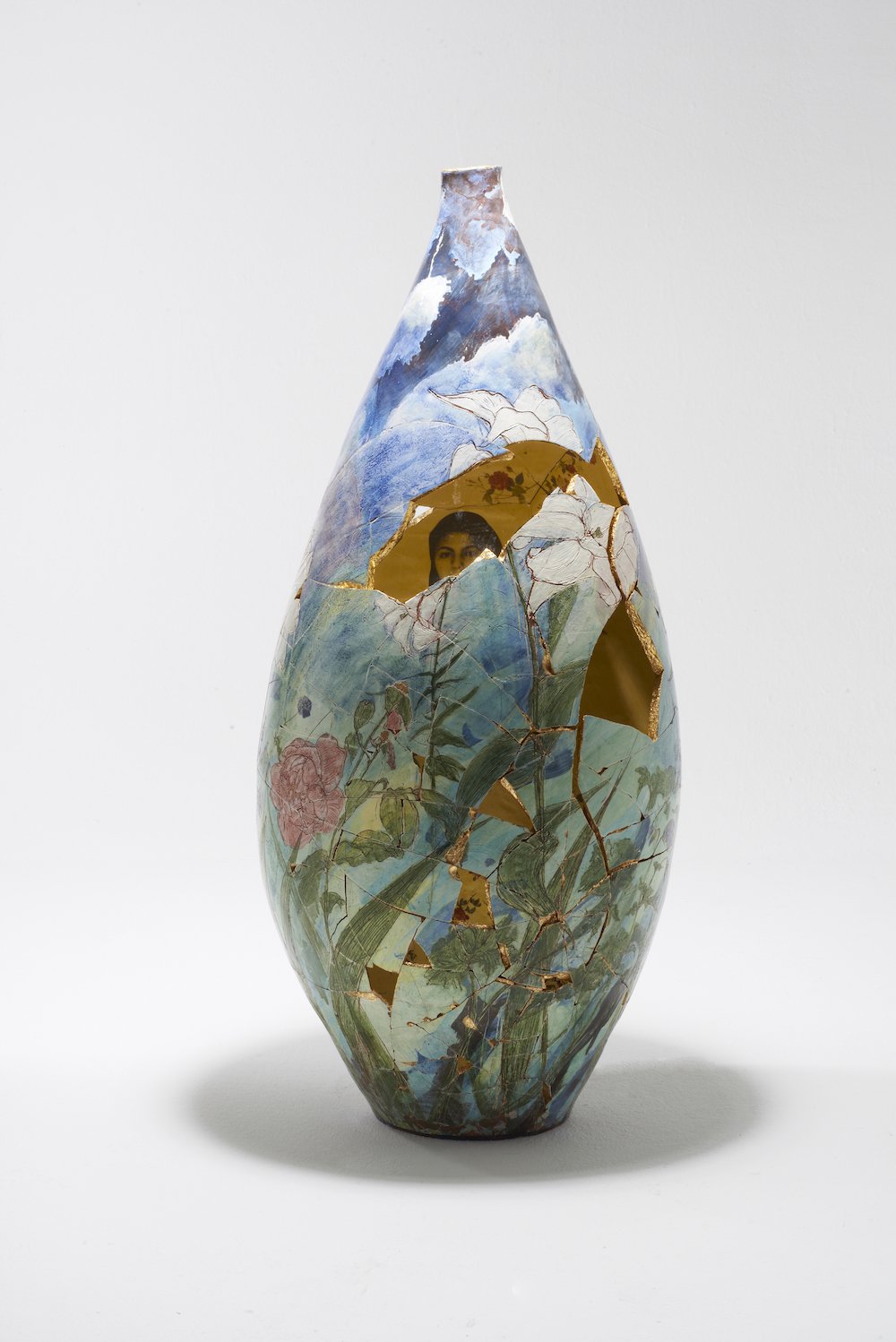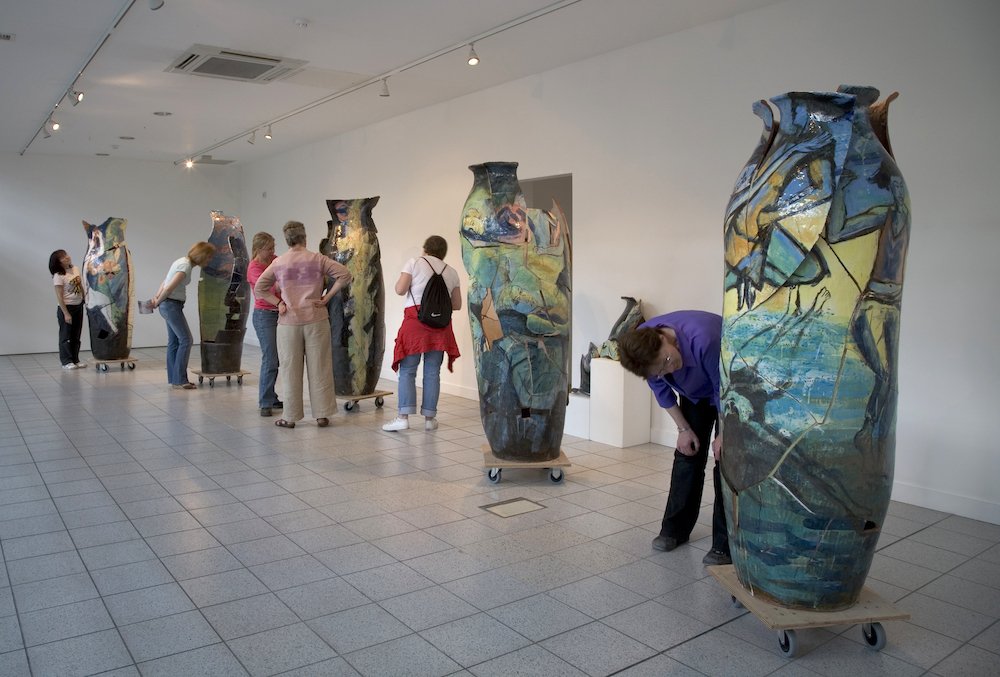Creative Resistance
By Claudia Clare, a feminist artist (potter) and author of Subversive Ceramics, Bloomsbury 2016. This article was adapted from the speech Claudia gave at #FiLiA2021 during the Creative Resistance Panel.
Why would anyone use clay pots to talk about sexual violence?
I trained as a painter but chose to ‘paint’ on pots because I had things to say. Limited only by the rim and base, a pot can allow a pictorial narrative to unfold as it turns. Also, pots are associated with domestic space and contain a rich seam of cultural and historic associations. As a feminist, my career in creative resistance began the day I started making pots. The Clause 28 Tea Set, 1988, records all the lesbian only protests and some of its pieces now provide the only extant record in the public domain. The official version rejected such protests as ‘divisive’ and contrary to the spirit of the ‘united front.’ Clause 28 also prompted what is probably my first broken and reassembled work, ‘Smash the Clause.’ Both these works now belong to the Pankhurst Centre, Manchester.
Pots as social document and pots as a material metaphor feature strongly throughout my feminist work. ‘Shattered,’ 2007 comprises five, giant-sized, broken and rebuilt pots. It is a response to many years of listening to women talking to me about their experience of surviving sexual violence. ‘I was shattered. Now I’m piecing myself slowly back together,’ paraphrases what so many women say when referring to men’s violence and the impact it has on their lives. When making work about men’s violence towards women, I do not want to reproduce that violence pictorially. Nor do I want to silence, sanitise or conceal it. Smashing the pot works as a metaphor that expresses the violence. The scattered shards can be gathered and reassembled to rebuild the pot. In principle, a pot can be restored, museum-style, to an almost perfect version of its pre-broken self. My pots are reassembled but with some pieces left out. In some cases this allows the viewer to see the images inside the pot, in others, it suggests a history of violence that the woman wants to put behind her. The memory is mostly contained but flashbacks push through the cracks sometimes - she is vulnerable to further pressure.
Remembering Atefeh, 2011-2013, was smashed as part of a memorial ceremony with a group of Iranian refugees, in Hyde Park, opposite the Iranian Embassy. Atefeh Rajavi Sahaaleh was hanged at the age of sixteen for ‘crimes against chastity.’ She had been raped and prostituted by a fifty year old taxi driver, formerly a member of the Revolutionary Guard, since the age of twelve. One of the men attending the event had been a prison guard: ‘This happens in every city in Iran. There are hundreds of girls in prison sentenced to death every year,’ he told me. This might be considered the ‘nationalised model’ of dealing with ‘disposable girls.’ Britain follows one of the privatised models.
Women @the Well is a women only service based in Kings Cross, central London, that supports women involved in prostitution – including those at risk – and also provides support to women trying to get out of the sex trade. Our joint project, ‘And the Door Opened,’ aims to improve the public’s understanding of what prostitution is, as opposed to the numerous prevailing myths, and campaigns for legal reform in favour of the ‘Equality Model.’
I work from short accounts provided by the women to make pots that illustrate their lives and their position now – often in progress from a prostituted life towards one free from the sex trade with more choices. ‘February Dark and Cold,’ 2020 depicts a very young woman in Kings Cross where she’s selling sex. Moving round the pot we see her being arrested before reconnecting with W@W and meeting her named key worker with whom she can build a relationship of trust and start the process of escaping a life of sexual exploitation and, perhaps, be with her son and mother again.
Art, no matter how feminist, cannot by itself change society but by working collaboratively with feminist campaigners and experienced professionals, it can certainly be part of the cultural context in which social change might occur. Abolishing the sex trade is often regarded as an impossible goal – absurd almost – but one of art’s strengths is its capacity to make impossible ideas seem normal.




